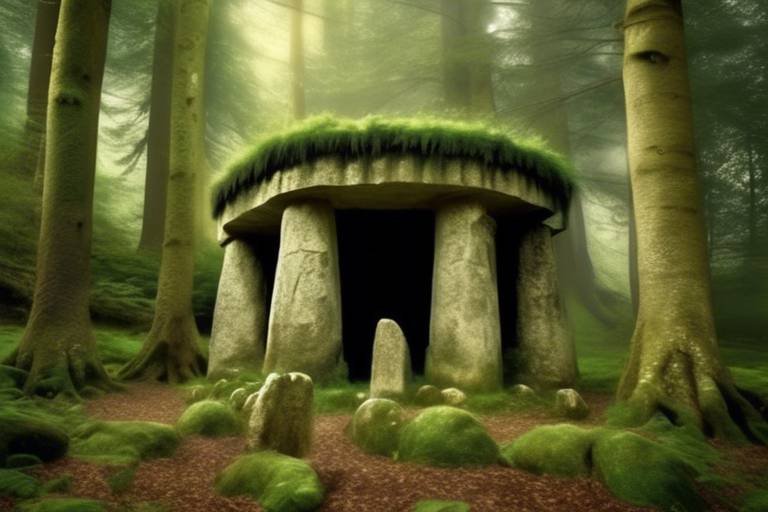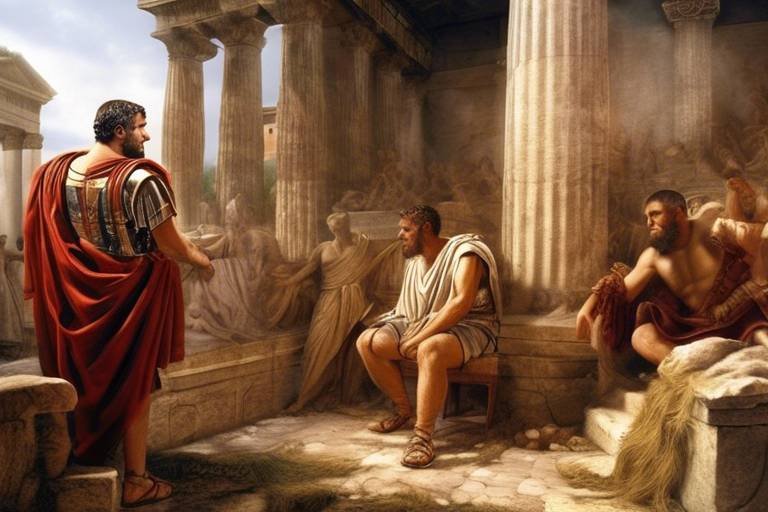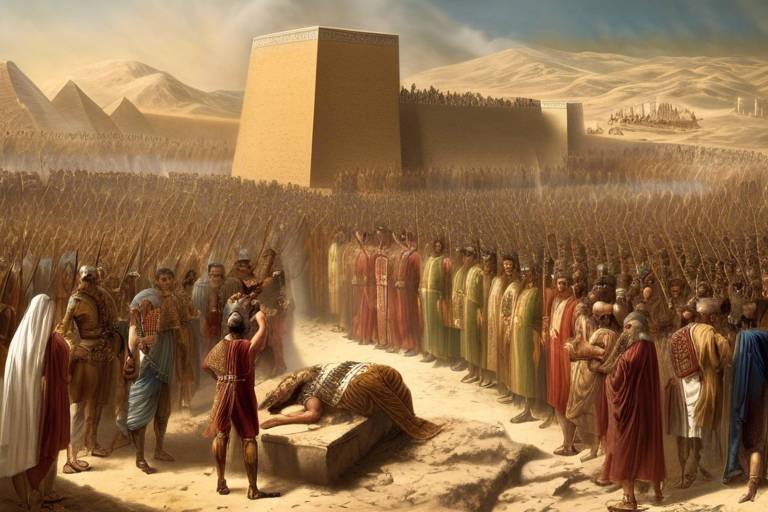The Secrets of the Terracotta Army of China
The Terracotta Army of China, a marvel shrouded in mystery and wonder, holds within its clay soldiers a tale of ancient craftsmanship and historical significance. Unearthed in 1974 by unsuspecting farmers, this archaeological wonder dates back to the reign of Emperor Qin Shi Huang, the first emperor of a unified China.
As you gaze upon the rows of intricately crafted soldiers, horses, and chariots, you can't help but marvel at the sheer artistic detail and craftsmanship that went into creating these life-sized figures. Each soldier bears unique facial features and expressions, a testament to the advanced skills of ancient Chinese artisans.
Emperor Qin Shi Huang's mausoleum, where the Terracotta Army was buried, stands as a testament to the grandeur and complexity of ancient Chinese architecture. This vast underground necropolis was designed to protect the emperor in the afterlife, showcasing the importance placed on the afterlife in ancient Chinese beliefs.
Archaeologically, the Terracotta Army provides invaluable insights into ancient Chinese burial practices, military strategies, and the cultural landscape of the Qin Dynasty. The sheer scale and precision of the army hint at the power and resources of Emperor Qin Shi Huang's reign.
One of the most intriguing mysteries surrounding the Terracotta Army is the identity of the high-ranking general figure. Historians and researchers have debated his significance, with some suggesting he may represent a key military strategist or a revered leader from Emperor Qin Shi Huang's court.
Preserving these delicate terracotta artifacts presents a significant challenge, with environmental factors and the passage of time threatening their integrity. Conservation efforts are ongoing, utilizing modern technologies to protect and restore these ancient treasures for future generations to appreciate.
For visitors to the site in Xi'an, China, the Terracotta Army offers a unique opportunity to step back in time and witness the legacy of ancient China up close. The tourism industry plays a crucial role in promoting cultural heritage and historical awareness, ensuring that the story of the Terracotta Army continues to captivate audiences worldwide.
As researchers continue to delve into the secrets of the Terracotta Army, new discoveries and insights are constantly emerging. Advancements in technology and interdisciplinary studies hold the promise of uncovering even more mysteries hidden within the clay ranks of these ancient soldiers.
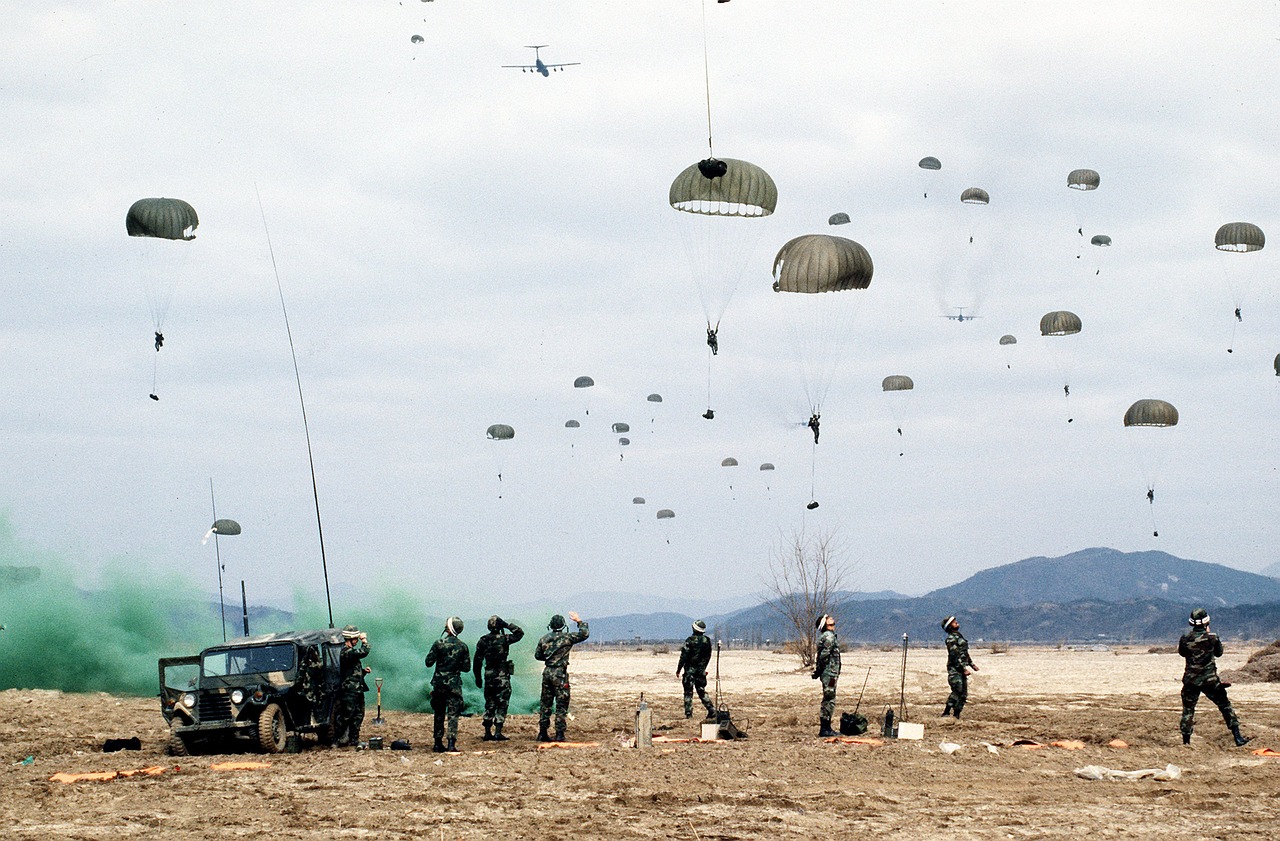
Discovery and History
Exploring the fascinating history, discovery, and mysteries surrounding the ancient Terracotta Army in China, providing insights into its significance and the ongoing archaeological research.
Unveiling the story behind the accidental discovery of the Terracotta Army in 1974 by local farmers and the historical context of its creation during the reign of Emperor Qin Shi Huang.
The Terracotta Army, a remarkable archaeological find, was stumbled upon by farmers digging a well near Xi'an, China. Little did they know that beneath the earth lay one of the most extraordinary ancient treasures. Dating back to over two millennia, these life-sized clay soldiers were crafted to accompany Emperor Qin Shi Huang in the afterlife. This astonishing discovery sheds light on the grandeur and meticulous planning of the Qin Dynasty.
Emperor Qin Shi Huang, known for his ambitious projects, ordered the construction of the Terracotta Army to safeguard his rule in the afterlife. Each soldier was intricately designed, showcasing a variety of facial features, hairstyles, and armor, reflecting the diversity of the ancient Chinese army. The historical significance of this find cannot be overstated, offering a glimpse into the military might and cultural beliefs of ancient China.
The discovery of the Terracotta Army not only astonished the world but also rewrote history books. It revealed the sophistication of ancient Chinese craftsmanship and the meticulous planning that went into honoring the emperor in his eternal rest. The accidental unearthing of this archaeological marvel continues to captivate researchers and visitors alike, unraveling the mysteries of a bygone era.
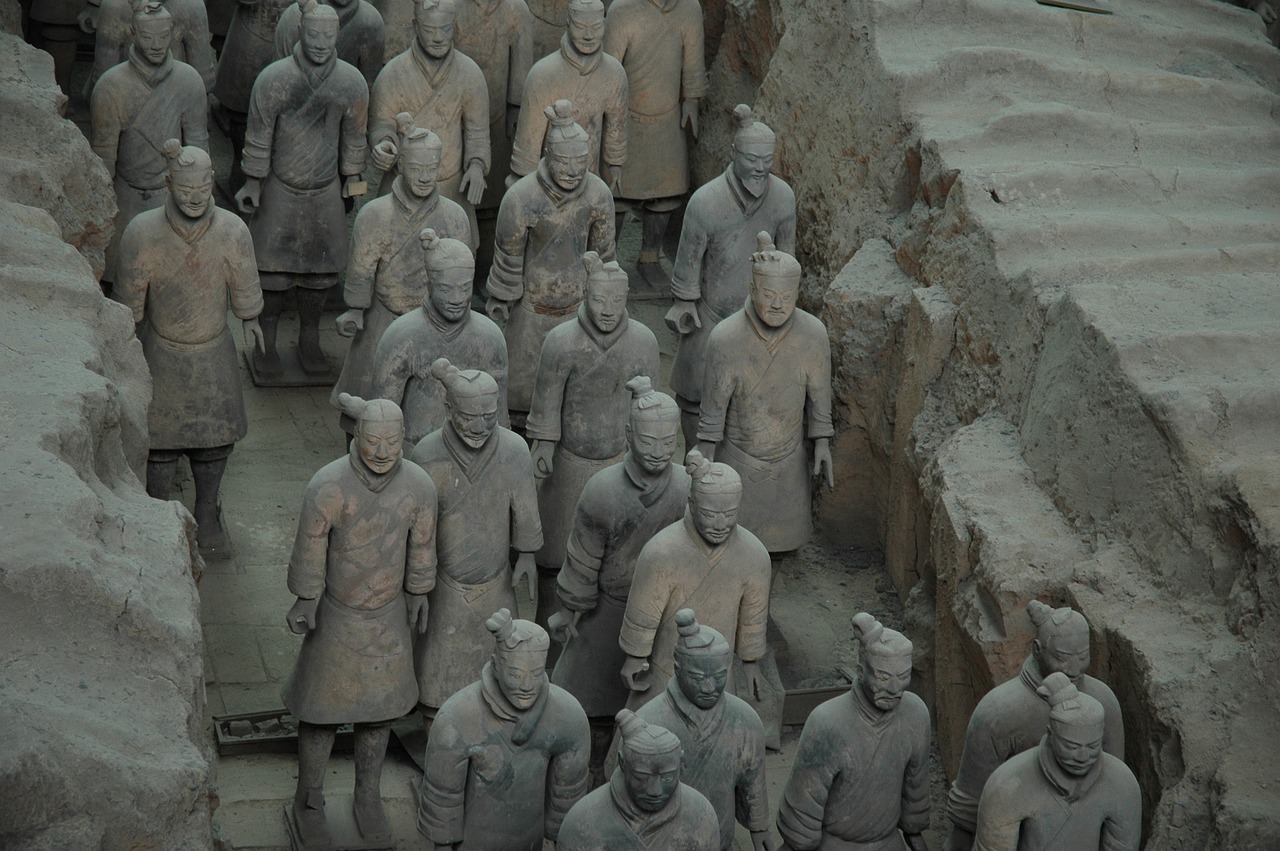
Artistic Detail and Craftsmanship
Exploring the fascinating history, discovery, and mysteries surrounding the ancient Terracotta Army in China, providing insights into its significance and the ongoing archaeological research.
When it comes to the Terracotta Army, one cannot help but marvel at the exceptional artistic detail and craftsmanship displayed in each and every one of the thousands of life-sized terracotta soldiers, horses, and chariots. These ancient artifacts are not merely sculptures; they are masterpieces that reflect the advanced skills and creativity of the ancient Chinese artisans.
The meticulous attention to detail in the facial features, armor, and hairstyles of the terracotta figures showcases the level of expertise possessed by the craftsmen of the time. Each soldier is unique, with distinct expressions and poses that bring them to life in a way that is truly awe-inspiring.
Moreover, the sheer scale of the project is staggering. The fact that each terracotta warrior was individually crafted with precision and care is a testament to the dedication and skill of the artisans involved. From the intricate patterns on the armor to the realistic depiction of weapons, every aspect of the terracotta army speaks volumes about the artistic prowess of ancient China.

Emperor Qin Shi Huang's Mausoleum
Exploring the fascinating history, discovery, and mysteries surrounding the ancient Terracotta Army in China, providing insights into its significance and the ongoing archaeological research.
Emperor Qin Shi Huang's mausoleum stands as a testament to ancient Chinese architectural ingenuity and the belief in the afterlife. This monumental structure, located near the Terracotta Army site in Xi'an, was designed to safeguard the emperor in his eternal rest.
The mausoleum complex is a marvel of engineering, with its underground chambers containing a replica of the imperial palace, complete with rivers of mercury symbolizing the flow of life. The intricate layout of the mausoleum reflects the emperor's desire for eternal power and protection beyond the physical realm.
Surrounded by a vast necropolis, the mausoleum is a silent guardian of history, holding within its depths the secrets of a bygone era. The grandeur of Emperor Qin Shi Huang's final resting place echoes the emperor's quest for immortality and eternal legacy.
Stay tuned for answers to common questions about the Terracotta Army, Emperor Qin Shi Huang, and the mysteries of ancient China!
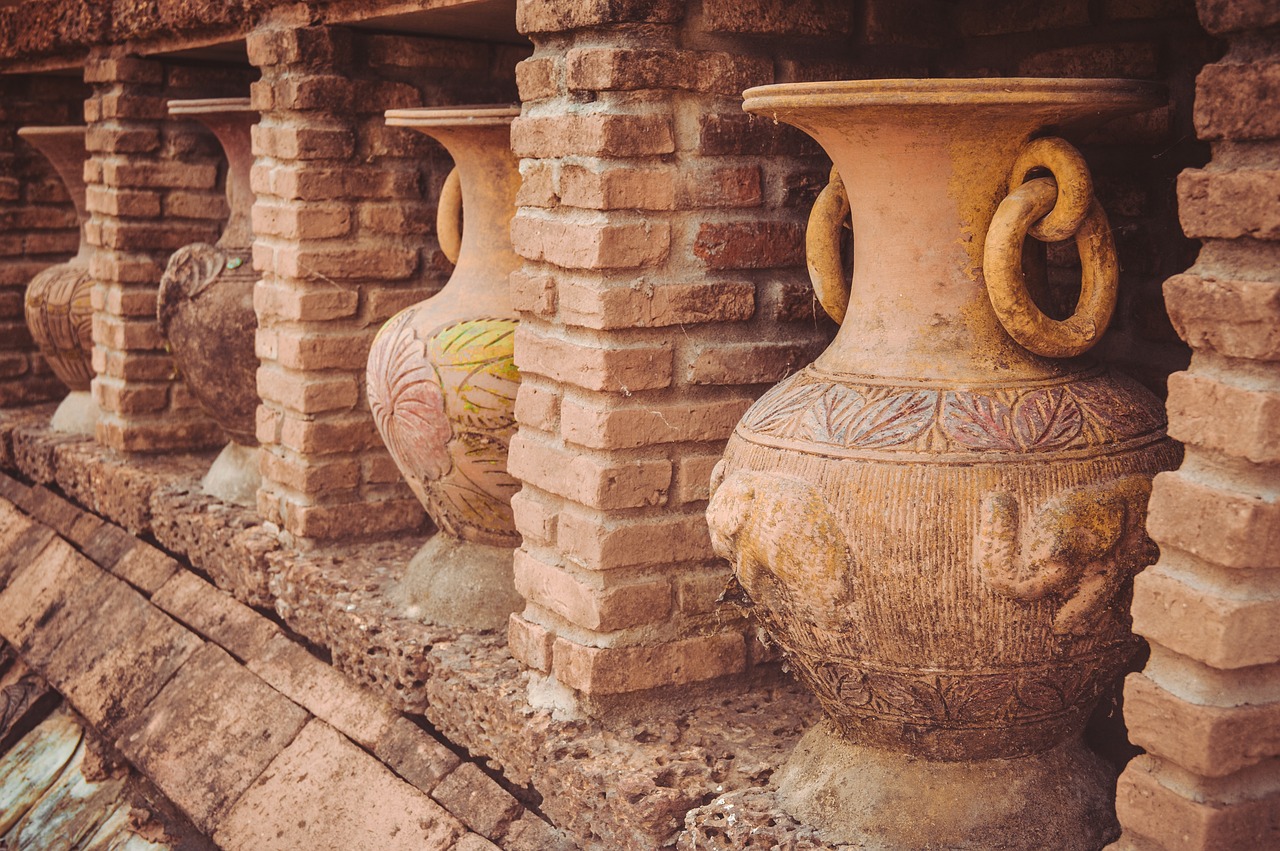
Archaeological Significance
Exploring the fascinating history, discovery, and mysteries surrounding the ancient Terracotta Army in China, providing insights into its significance and the ongoing archaeological research.
The Terracotta Army holds immense archaeological significance, offering a unique window into ancient Chinese burial practices and military strategies of the Qin Dynasty. Through the meticulous arrangement of thousands of terracotta soldiers, horses, and chariots, the site provides valuable insights into the cultural and social aspects of that era.
Archaeologists have uncovered a wealth of information about the Qin Dynasty's military organization, equipment, and tactics through the detailed representation of the soldiers in battle formation. The accuracy and attention to detail in the terracotta figures have helped researchers reconstruct historical events and understand the hierarchical structure of the army.
Moreover, the presence of different types of warriors within the army, including infantry, archers, and cavalry, reflects the diversity and complexity of ancient Chinese warfare. The discovery of the Terracotta Army has revolutionized our understanding of ancient military history and provided a glimpse into the military might of the Qin Dynasty.
Furthermore, the burial site's architectural layout and the accompanying artifacts shed light on the elaborate funerary practices of Emperor Qin Shi Huang. The meticulous planning and construction of the mausoleum complex highlight the emperor's quest for immortality and his desire to maintain power even in the afterlife.
Overall, the archaeological significance of the Terracotta Army extends beyond its artistic value, serving as a crucial resource for studying ancient Chinese civilization, military strategies, and burial customs.
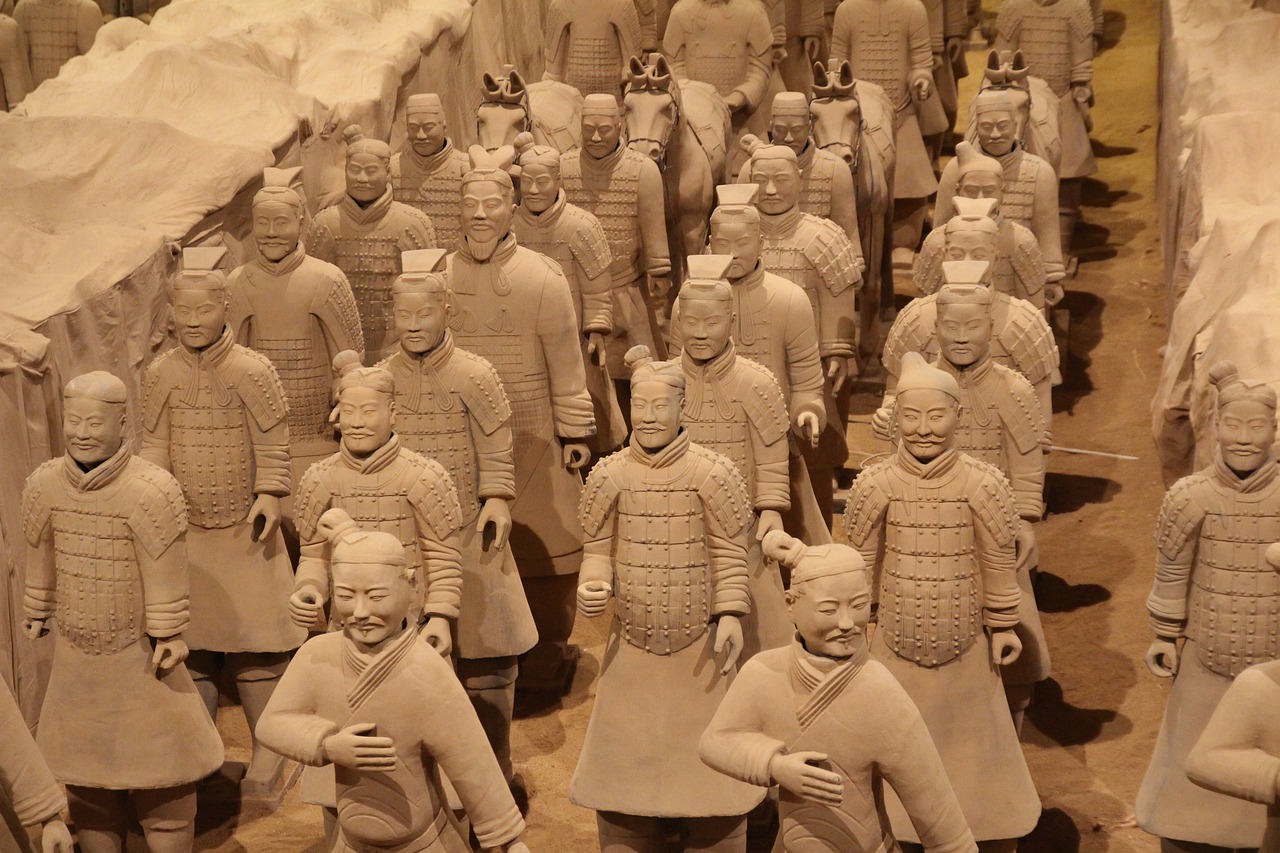
Mystery of the General's Identity
Unraveling the mystery of the high-ranking general figure within the Terracotta Army is akin to deciphering an ancient riddle that has perplexed historians and archaeologists for decades. The identity of this enigmatic figure, believed to be a prominent military leader in Emperor Qin Shi Huang's army, continues to spark intense debates and speculations within the scholarly community.
Historical records offer limited clues, leaving researchers to rely on the intricate details of the general's attire, posture, and accompanying artifacts to piece together his significance. Some theories suggest that he might be a trusted general who played a pivotal role in the emperor's military conquests, while others propose a symbolic representation of power and authority within the ancient Chinese hierarchy.
One of the prevailing mysteries surrounding the general's identity is the absence of inscriptions or explicit documentation within the burial site, adding to the mystique and allure of this ancient relic. The intricate details of his armor, facial features, and stance provide tantalizing glimpses into the past, inviting interpretations and hypotheses that contribute to the ongoing fascination with the Terracotta Army.
As researchers continue to delve into the historical context and archaeological evidence surrounding the Terracotta Army, the quest to unveil the true identity of the general remains a tantalizing pursuit, highlighting the enduring allure and complexity of ancient Chinese civilization.
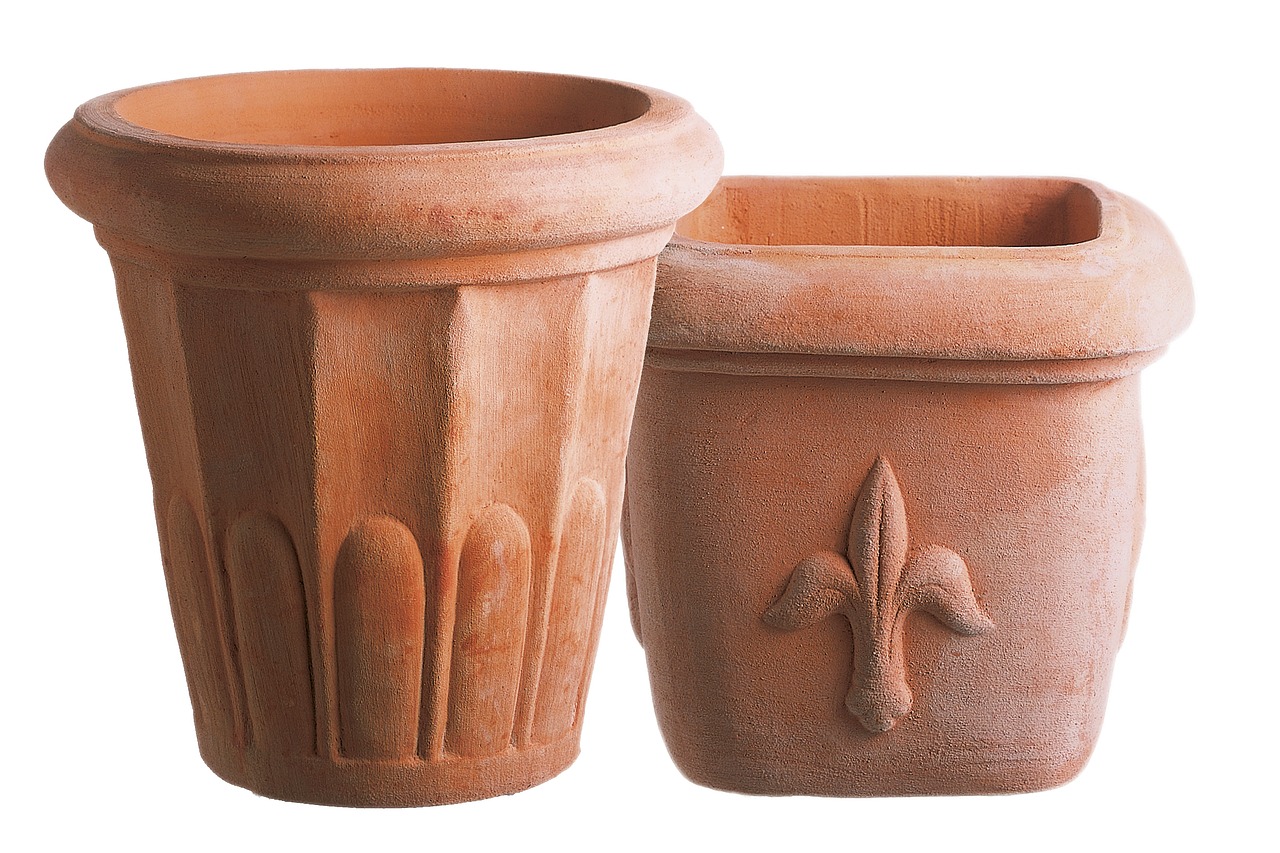
Preservation Challenges
Preserving the delicate terracotta artifacts of the ancient Terracotta Army poses significant challenges due to their fragile nature and susceptibility to environmental factors. The terracotta figures, once exposed to air, are prone to rapid deterioration, requiring meticulous conservation efforts to prevent damage. Humidity, temperature fluctuations, and pollutants in the air can all contribute to the degradation of the terracotta sculptures, necessitating controlled storage conditions and restoration techniques.
Conservationists face the ongoing challenge of balancing the need to protect the terracotta artifacts with the desire to display them for public viewing. The exposure to light, both natural and artificial, can fade the vibrant colors of the terracotta figures over time, prompting the implementation of specialized lighting systems in exhibition spaces. Additionally, the physical handling of the artifacts during maintenance and restoration work requires careful expertise to avoid accidental damage.
Modern technologies play a crucial role in the preservation of the Terracotta Army, with innovative methods such as 3D scanning, digital mapping, and chemical analysis aiding conservation efforts. These technological advancements enable researchers to study the terracotta sculptures in detail without causing harm to the original artifacts, facilitating a deeper understanding of their construction techniques and materials.

Visitor Experience and Tourism
Exploring the fascinating history, discovery, and mysteries surrounding the ancient Terracotta Army in China, providing insights into its significance and the ongoing archaeological research.
When visiting the awe-inspiring site of the Terracotta Army in Xi'an, China, visitors are greeted with a sense of wonder and admiration. The scale and intricacy of the thousands of terracotta soldiers, horses, and chariots are truly remarkable, offering a glimpse into the ancient craftsmanship and culture of China.
The visitor experience is enhanced by the opportunity to witness ongoing archaeological excavations and restoration efforts, allowing a deeper appreciation of the historical significance of this UNESCO World Heritage Site. Tourists can marvel at the different pits housing the terracotta figures, each revealing unique details and formations that continue to puzzle researchers.
Guided tours provide valuable insights into the history and significance of the Terracotta Army, offering narratives that bring the ancient past to life. Visitors can also explore the onsite museum, which showcases artifacts, tools, and weapons unearthed from the site, further enriching the understanding of Emperor Qin Shi Huang's legacy.
For those seeking a more immersive experience, cultural performances and demonstrations are often held near the site, allowing visitors to engage with traditional music, dance, and crafts. The vibrant atmosphere adds a dynamic element to the visit, creating lasting memories of a journey through time and history.
Moreover, the tourism industry plays a vital role in promoting the cultural heritage of the Terracotta Army, attracting visitors from around the world and contributing to the local economy. Hotels, restaurants, and souvenir shops near the site cater to the needs of travelers, offering a blend of modern comfort and ancient wonders.
Overall, the visitor experience at the Terracotta Army site is a harmonious blend of education, exploration, and appreciation for one of the most significant archaeological discoveries in history. It serves as a testament to the rich cultural heritage of China and invites visitors to embark on a journey of discovery and enlightenment.

Ongoing Research and Future Discoveries
Exploring the fascinating history, discovery, and mysteries surrounding the ancient Terracotta Army in China, providing insights into its significance and the ongoing archaeological research.
As researchers delve deeper into the secrets of the Terracotta Army, new technologies are playing a crucial role in uncovering hidden truths. Ground-penetrating radar and 3D scanning techniques are revolutionizing the way we understand the vast mausoleum complex. By peering beneath the surface without disturbing the ancient relics, scientists are piecing together a clearer picture of Emperor Qin Shi Huang's grand burial site.
Interdisciplinary studies are also shedding light on different aspects of the army. Archaeologists are collaborating with historians, anthropologists, and materials scientists to analyze the terracotta figures from various perspectives. By combining expertise from different fields, researchers hope to gain a comprehensive understanding of the cultural, social, and artistic significance of this remarkable archaeological find.
Moreover, ongoing excavations within the mausoleum complex continue to unveil new discoveries. Recent findings of miniature chariots and weapons suggest that the army was part of a larger funerary retinue, reflecting the emperor's desire for a well-equipped afterlife. These revelations not only enhance our knowledge of ancient Chinese burial practices but also raise intriguing questions about the symbolic meanings embedded in the terracotta sculptures.
Looking ahead, the future holds exciting possibilities for the study of the Terracotta Army. With advancements in DNA analysis and isotopic studies, researchers aim to identify the origins of the artisans who crafted these magnificent statues. By tracing the geographical sources of raw materials used in the figures, scholars hope to unravel the trade networks and cultural exchanges that influenced the creation of the army.
Frequently Asked Questions
- What is the Terracotta Army?
The Terracotta Army is a collection of thousands of life-sized clay soldiers, horses, and chariots that were buried near the tomb of China's first emperor, Qin Shi Huang, to protect him in the afterlife.
- How was the Terracotta Army discovered?
The Terracotta Army was accidentally discovered in 1974 by local farmers in Xi'an, China, while digging a well. This incredible archaeological find led to the excavation of one of the most significant historical sites in the world.
- What is the significance of the Terracotta Army?
The Terracotta Army holds immense historical and cultural significance as it provides insights into ancient Chinese burial practices, military strategies, and the artistic achievements of the Qin Dynasty. It offers a glimpse into the power and grandeur of Emperor Qin Shi Huang's reign.
- Why is the identity of the General in the Terracotta Army a mystery?
The identity of the high-ranking general figure among the Terracotta Army remains a mystery because historians and researchers have not been able to definitively determine who he represents. This mystery adds an element of intrigue and ongoing research to the site.
- What challenges are faced in preserving the Terracotta Army?
Preserving the delicate terracotta artifacts faces challenges such as environmental factors, including humidity and temperature fluctuations, as well as the need for advanced restoration techniques to maintain the integrity of the ancient sculptures.
- Can visitors see the Terracotta Army in person?
Yes, visitors can experience the awe-inspiring Terracotta Army in person at the site in Xi'an, China. The site attracts tourists from around the world who come to witness this remarkable archaeological wonder.
- What ongoing research is being conducted on the Terracotta Army?
Current research initiatives focus on using advanced technologies and interdisciplinary studies to uncover more secrets of the Terracotta Army, including exploring the tomb of Emperor Qin Shi Huang and further understanding the historical context of the site.



